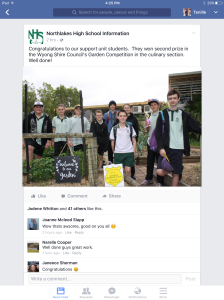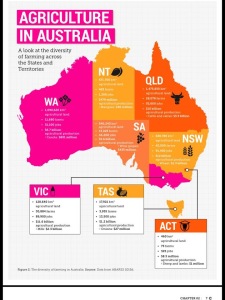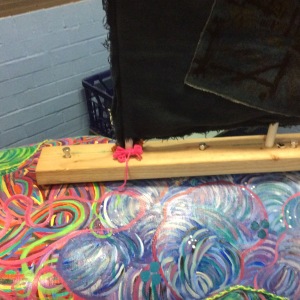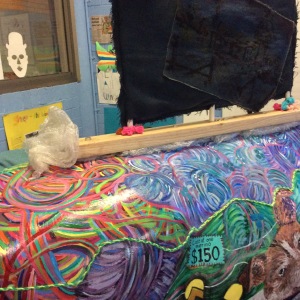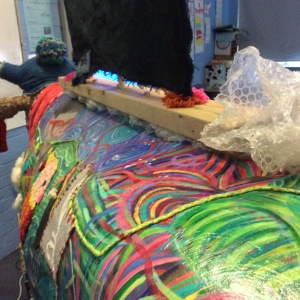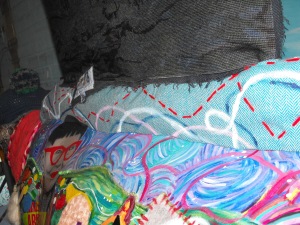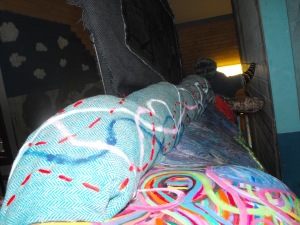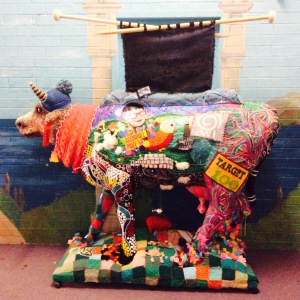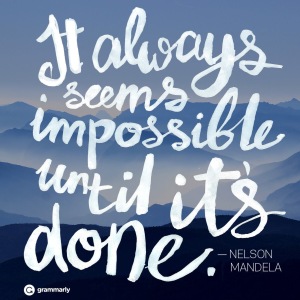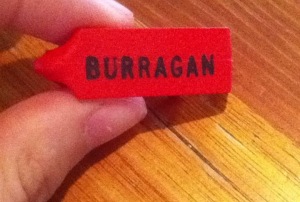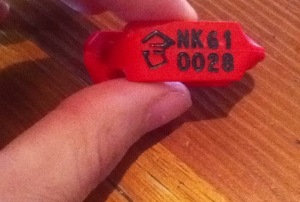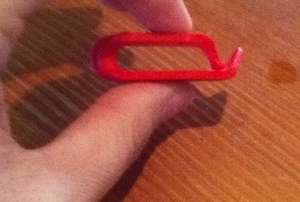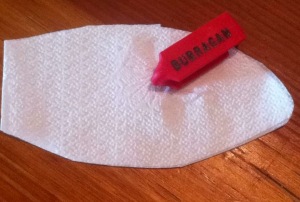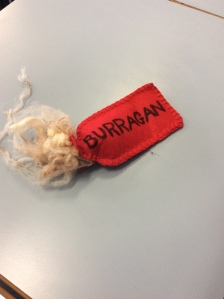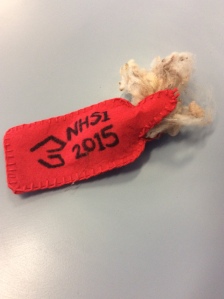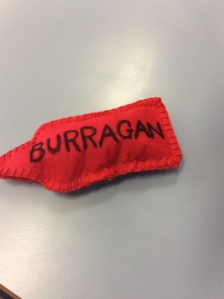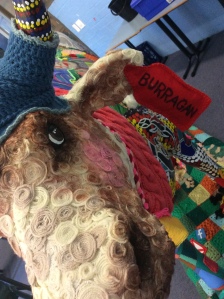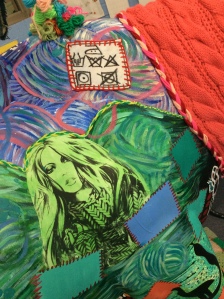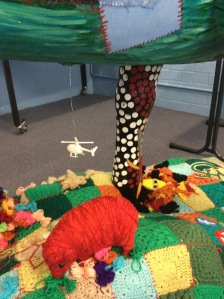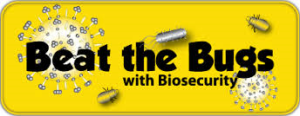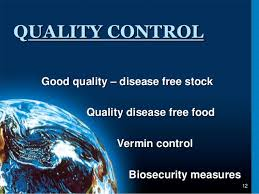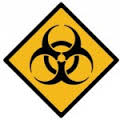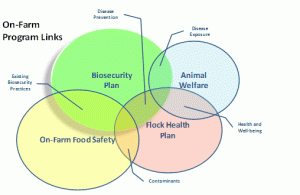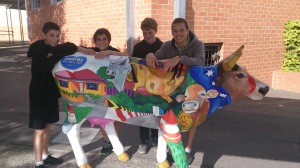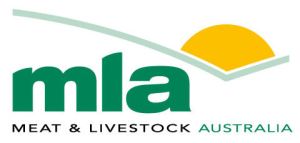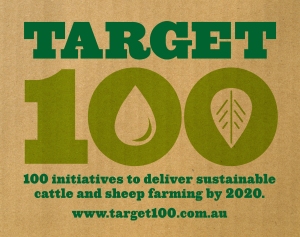School: Northlakes High School
Name: “Woolbaakee – Weaving an Australian Woollen Dream”
Commodity: Wool
What years and classes were involved?
8WL – Learning Supported Class, Year 10 students (6), Aboriginal art group (6) & Other students (10).
Theme:
Australian Wool’s journey from the sheep’s back to ours & beyond. Our priority was to demonstrate the intertwining, reciprocal relationships and links between all sectors of the supply chain along its journey using painted line, movement, direction and symbolic elements.
Concept:
The artwork examines the various stages of wool production in the Australian agricultural and farming industry through to consumers and the fashion industry – all the way from the paddock, off the sheep’s back through to the fashion industry and onto our backs as consumers.
We arrived at the decision to name our Archi “Woolbaakee – Weaving an Australian Woollen Dream” late in our journey. No other names seemed to suit our story. We drew on a number of different references and suggestions from the wider school community, settling on “Woolbaakee”. With obvious inspiration from our allocated commodity, joined with “kee” on the end, directly connecting with Australian fashion and wool industry icon, Jenny Kee.
Giant tapestries and oversized wooden knitting needles hover above the entire artwork epitomising Australia’s long and rich cultural history in the wool industry. The knitting needles are attached to at base which has been stuffed with plastic bubble wrap and covered with woollen fabric. We have also repeated the red stitching and lines of painted wool to balance the rest of the artwork.
Patch-worked through the artwork are symbolic elements and logos associated with the Australian wool and fashion industries such as “Australian Wool Innovation” (AWI), “Meat & Livestock Australia” (MLA) and “The Woolmark Company” as well as innovative Australian farming initiatives like “Target 100”.
High on our agenda was to incorporate symbolic references to innovative Australian farming initiatives like “Target 100” and “MLA” that promote environmentally sustainable and responsible farming practices through their
R&D projects. This is important because the Australian livestock industry to maximise their productivity and profit, while being responsible global citizens.
A major focus of study for us in 2015 was learning about the benefits of native vegetation feeding represented by the Aboriginal artwork in our design. On display, the delicate balancing act between all elements in the natural environment (native and introduced) to produce a premium product, which is exported worldwide.
Lengths of boldly painted intertwining woollen twine form the basis of the artwork on the hind legs. The artwork appears to emerge from a tangled mess of vibrantly coloured yarn, emphasised by the strategically placed painted balls of wool, which are repeated through the artwork giving cohesion and balance.
Collaged fashion designs from the “Wool4Skool Project”. This project invites Secondary school students to design garments using Australian Merino wool were scattered through the landscape. Adding Merino wool fabric samples to the collage increases the authenticity, while adding texture.
A highly stylized image of a fashion model wearing a knitted jumper made from Merino wool was thoughtfully collaged into the paddocks and valleys in the background. Her shape and form mimics that of the landscape in the background.
“Woolbaakee” wears a custom made, 100% Merino wool beanie with a giant pom-pom. The wool for the beanie was donated to us from “White Gum Wool” in Tasmania. Nan Bray (WGW) is also known for her environmentally sustainable, friendly farming practices, which we studied in class this year.
Attached to our Archi are her care instructions, making sure she is cared for as woollen garments should be.
Woollen friendship bands were handcrafted by members of 8WL and attached to form petals around the flower adoring Woolbaakee’s beanie. While adding interest and texture to the artwork, the friendship bands go further to reinforce the strong bonds, relationships and teamwork which have resulted because of our involvement in the 2015 Archibull Prize.
The leaves were created using hand dyed cut outs which were up cycled from a100% Merino wool blanket.
Each student who worked on the artwork in 2015 placed a single fingerprint on the cow in various places. Although they are not highly visible to the naked eye, they emphasise our strong bond and reinforce our team’s efforts.
Individual woollen swirls cover Woolbaakee’s faces to replicate sheep’s wool and give a wonderful texture and point of difference and character to our Archibull. Every member of 8WL contributed to the decoration that covers her face.
A range of Aboriginal artwork and traditional dot painting interwoven throughout our artwork from the tips of the horns all the way to the tip of her tail; paying homage to the talented Aboriginal population of students we have at Northlakes High School, as well as making links to the land and using Australian native flora for flock feeding in the Australian farming industry.
An Aboriginal styled, woollen felt lizard travels off the front leg, making its way off the background of Aboriginal art and back to the valley below, further reinforcing the need for balance in farming to keep the natural environment healthy.
Climate change and the environment is another element which impacts on Australian farmers; by recycling the plastic bubble wrap we reduced waste and landfill thus helping the environment; furthermore we used rubbish from the playground to fill our wire support structure, which created the base of the woven valley. We also padded out “Woolbaakee’s” woollen beanie with the leftover bubble wrap to give it form and structure.
The woven, woollen platform is literally and symbolically the ground from which the entire artwork and industry grows through the hard-working Australian woolgrowers.
Hovering above the platform is a small helicopter. When Bessie visited Northlakes High School she informed students that one way they herd sheep on her farm (because it is so large) is to use a little helicopter. Students thought this was wonderful!
Nestled in the woven patchwork valley is a lone sheep that has been covered with red wool and is attached to a single red ball of wool, from which all the other stitching emerges reinforcing the interconnections between all elements of the industry from the ground up.
Patchwork woollen squares are sewn together using lengths of red wool representing the Australian farmers. We are making the statement; “Australian farmers are the bloodline of our country – holding it all together”. The end result is a covering over the surface of the valley like a patchwork blanket, which is common in many Australian households, but used in a way to represent the Australian farming landscape in an abstract and creative way.
The patchwork pattern is mimicked in paint up the length of the front leg to reinforce and unify the link between wool producers, the land and production process as the wool moves through its journey.
The red stitching, which borders each patch, is repeated from the valley below, creating unity within the artwork. The patchwork element is further repeated to cover our Archibull’s udders and held together with red stitching again, reinforcing our message.
Overlaid throughout the artwork are small painted patchwork squares with statistics about the Australian wool industry.
Included throughout our artwork are multiple references to our Young Farming Champion Bessie Thomas. One of the highlights for students was Bessie’s visit to Northlakes High School, represented by our school logo on the patchwork base.
We constructed a small flock of sheep from actual fleece from Bessie’s sheep, which dot the landscape of the woven patchwork valley supporting the entire artwork.
We made logos and icons created from felt to symbolise our bond with Bessie. Our communication was predominantly through Facebook and email after the initial visit to our school, so thought it appropriate to include those symbols in our story.
Further subtle references to our YFC have been included through our visual narrative including a wool truck in the driveway; “Flip” the Jack Russell; a stack of tractor tires with signage pointing in the direction of the “main road” and to the “shed”, which was originally used on Bessie’s farm so the shearers knew which direction to go; and finally our Archibull has an identification tag in her left ear, because that’s the side for girls; the tag is specific to Bessie’s flock from Burragan. Woolbaakee’s identification tag is filled with greasy wool from Bessie’s own flock.
We believe our relationship with Bessie was paramount to our concept and through that students were better able to connect with lessons about agriculture, because they were able to put a face to it. We could not have done it without our Young Farming Champion Bessie!
Stylistic influences:
“Woolbaakee, Weaving an Australian Woollen Dream” is matchless and distinctive in style through the strong use of line induced by our actual commodity, wool.
Our first strike of inspiration comes from “Mulga The Artist”, who is a Sydney based poet, mural artist and freelance illustrator. Known for his unique style of intricate line work & bright colours. We knew when we stumbled across his artwork we could utilise line and direction in our artwork focusing on the line and movement and tangles wool naturally creates.
Further influences emerged from images in the “Mindfulness Colouring Book”, reinforcing the idea and concept of interwoven natural thin lines of wool (replicated with paint) made up a large part of our piece.
The bold colour choices of Jenny Kee and subject matter have influenced our colour palette through the artwork. Kee was the perfect designer to include, as she is an Australian icon in the fashion and wool industry; and just by chance, she was also painted for the 2015 “Achibald Prize”, so we thought it even more appropriate to recontextualise her portrait to include the signage “Archibull Prize”. The use of line, colour and her direct links to the wool and fashion industry blended almost seamlessly into our existing work to reinforce our story of wool’s journey from fibre to fashion.
What makes your Archibull unique?
Our artwork is highly distinctive in approach, technique and delivery. Each section of our artwork has a direct connection to the Australian wool industry, expressed in a unique and imaginative way; furthermore each element relates to the next, narrating the story in a cohesive and comprehensive way. Our work is full of minute detail, subtle and not so subtle references and links to the Australian wool industry and the journey from fibre to fashion.
Our artwork is incredibly resourceful and innovative. We have included actual waste from our school playground and metres and metres of plastic bubble wrap, which would have ended up in landfill, adding to the issue of global warming and climate change. As an artwork, we have taken lessons learnt in class and put them into action to demonstrate real world learning in an eclectic visual response.
Our Archibull artwork for 2015 is a tribute to the Australian agricultural industry and the farmers who work 7 days a week, 365 day a year to produce the highest quality wool, for us and the rest of the world.
This slideshow requires JavaScript.
